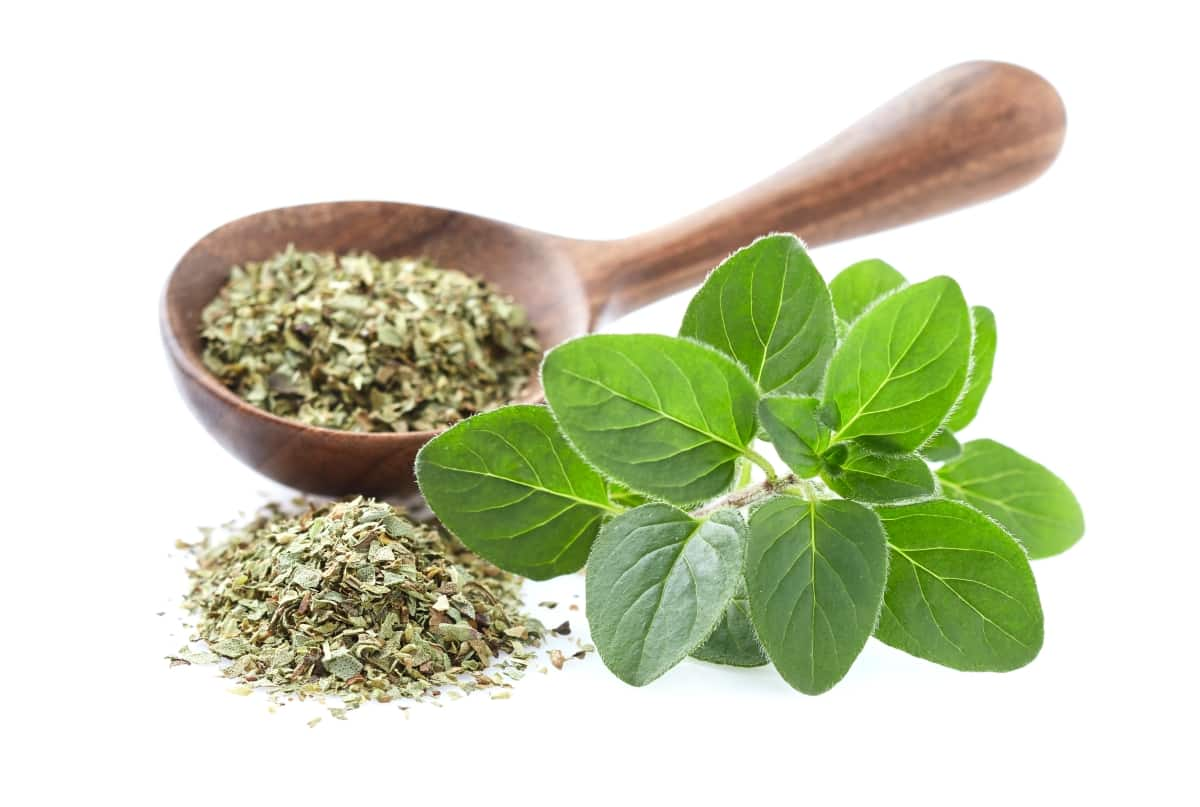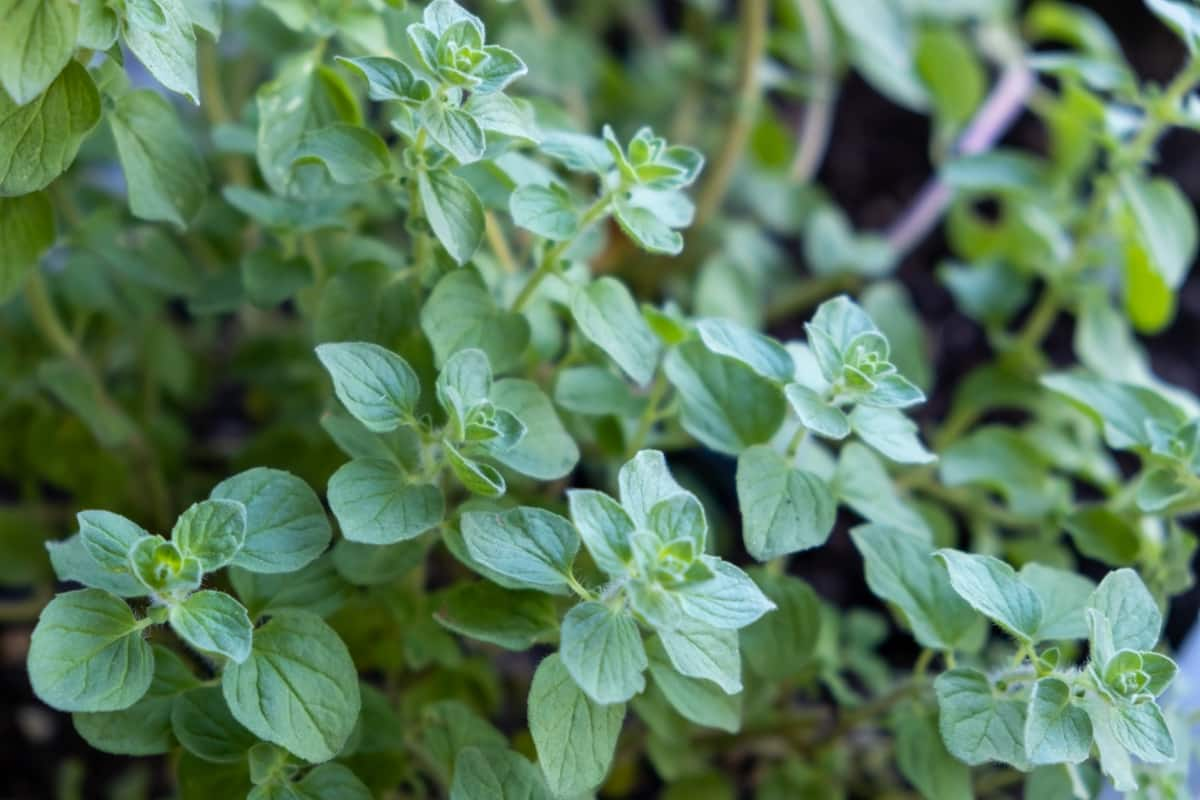In the culinary realm, Greek and Italian oregano are often considered interchangeable, yet experts highlight ten key distinctions. These variations encompass flavor profiles, chemical compositions, and regional preferences, influencing culinary choices globally. From the herb’s aromatic intensity to its nuanced undertones, each type offers a unique sensory experience. Understanding these differences elevates gastronomic experiences and underscores the significance of geographical origins in the world of herbs and spices.

10 Differences Between Greek and Italian Oregano
Botanical Classification
Greek oregano (Origanum vulgare subsp. hirtum) and Italian oregano (Origanum vulgare subsp. vulgare) are two distinct varieties within the mint family. While both share the botanical classification of Origanum vulgare, they exhibit subtle differences. Greek oregano, known for its robust flavor, often contains higher levels of essential oils, lending a stronger aroma and taste. Italian oregano, milder in comparison, is commonly associated with Mediterranean cuisine.
Flavor Profile
Greek oregano offers a robust and peppery taste with hints of lemon, making it ideal for savory dishes. Italian oregano tends to be milder and sweeter, with a more floral undertone. While Greek oregano is commonly preferred for Mediterranean and savory dishes, Italian oregano complements tomato-based recipes and is popular in Italian cuisine. The variations in flavor nuances make each type distinct, allowing chefs to choose based on their culinary preferences and the desired taste profile.
Culinary Uses
Greek oregano is robust and pungent with a strong, earthy flavor, making it ideal for savory dishes like grilled meats and Mediterranean cuisine. Its intensity can withstand high cooking temperatures. Italian oregano is milder and sweeter, offering a more delicate taste profile. It complements pasta sauces, salads, and lighter dishes, as its flavor can be overpowered by prolonged cooking. While both varieties can be used interchangeably in many recipes, the choice often depends on personal preference and the desired intensity of flavor.
Geographical Origin
Greek oregano hails from the Mediterranean region, including Greece. It is renowned for its robust and pungent flavor, with hints of pepper and a slightly bitter undertone. Greek oregano is often considered more flavorful and aromatic than its Italian counterpart.
In case you missed it: How to Grow Saffron Indoors: Get Excellent Profits with Saffron Farming At Home in Containers

On the other hand, Italian oregano is native to the warmer regions of southern Europe, including Italy. It tends to have a milder taste, featuring sweeter notes and less intensity compared to Greek oregano. The nuanced distinctions in climate and soil conditions of their respective regions contribute to the subtle variations in flavor, making each variety suitable for distinct culinary applications.
Chemical Composition
Greek oregano contains higher levels of essential oils, particularly carvacrol, and thymol, imparting a robust and pungent taste. These compounds contribute to Greek oregano’s strong antimicrobial properties and make it well-suited for savory dishes. On the other hand, Italian oregano is milder, with a sweeter taste due to a higher concentration of compounds like limonene and pinene. The lower levels of carvacrol and thymol result in a gentler flavor profile, making Italian oregano a popular choice for Mediterranean and Italian cuisine.
Cultural Significance
Greek oregano is renowned for its robust and pungent flavor, with hints of lemon and pepper. Its intensity makes it a staple in Mediterranean cuisine, particularly in Greek dishes like moussaka and souvlaki. Beyond culinary applications, Greek oregano holds cultural significance, symbolizing tradition and resilience in Greek folklore.
On the other hand, Italian oregano boasts a milder taste with a sweeter undertone, making it a preferred choice for Italian dishes such as pasta sauces, pizzas, and salads. Italian cuisine often emphasizes the use of oregano as a subtle yet essential herb. Culturally, Italian oregano reflects the diverse regional flavors embedded in the country’s culinary heritage.
Medicinal Properties
Greek and Italian oregano are two distinct varieties of the oregano herb, each with its unique characteristics, including differences in flavor, aroma, and appearance. While both belong to the mint family, Origanum vulgare, they have variations in essential oil composition, which contributes to variations in taste and fragrance.
In case you missed it: Top 10 Scented Flowers to Grow in Home Gardens in India

Medicinally, both Greek and Italian oregano share similar health benefits due to their common compounds, such as carvacrol, thymol, and rosmarinic acid. These components possess antimicrobial, anti-inflammatory, and antioxidant properties. The medicinal use of oregano dates back to ancient times, when it was employed to treat various ailments.
Growing Conditions
Greek oregano is renowned for its robust, peppery taste with hints of lemon, making it a staple in Mediterranean cuisine. It thrives in arid, rocky soils and requires full sun exposure for optimal growth. Greek oregano tends to be more drought-tolerant and can withstand harsher conditions.
On the other hand, Italian oregano boasts a milder, sweeter flavor compared to its Greek counterpart. Italian oregano is often associated with tomato-based dishes and is a key ingredient in many Italian recipes. This variety prefers well-drained, moderately fertile soil and benefits from a slightly shaded environment, making it more adaptable to various growing conditions.
Harvesting and Processing Methods
Greek oregano harvesting is typically done just before flowering, as the essential oil content peaks at this stage. The leaves are handpicked or trimmed using shears, ensuring the plant remains healthy for future growth. After harvesting, Greek oregano is air-dried in a shaded area to preserve its essential oils.
Italian oregano, on the other hand, is milder and slightly sweeter. Harvesting is best done during the flowering stage when the flavor is most balanced. Italian oregano is also air-dried, but the process may involve exposure to sunlight to enhance its delicate flavor. Both varieties benefit from minimal processing to retain their aromatic compounds. After drying, the leaves are carefully stripped from stems, and the final product is often crushed or ground before packaging.
Commercial Availability
In terms of commercial availability, both Greek and Italian oregano are widely accessible in grocery stores and markets. However, the distinction between the two may not always be explicitly stated on the packaging. It’s advisable for consumers seeking a specific flavor profile to explore specialty stores or markets that cater to Mediterranean ingredients, where they are more likely to find labeled varieties of Greek or Italian oregano to suit their culinary preferences.
In case you missed it: Flower Seed Germination Chart: Timeframes and Requirements

Conclusion
While these differences can serve as general guidelines, it’s important to note that individual plants and varieties may exhibit variations and personal preferences for flavor can play a significant role in choosing between Greek and Italian oregano for culinary purposes.
- Feed Your Flock for Less: Top 10 Tips to Save on Chicken Feed
- Ultimate Guide to Ossabaw Island Hog: Breeding, Raising, Diet, and Care
- Hatching Answers: The Top 10 Reasons Your Chickens Aren’t Laying Eggs
- Eggs and Economics: Breaking Down the Cost of Raising Backyard Chickens
- Defend Your Greens: Proven Methods to Keep Iguanas Out of Your Garden
- Ultimate Guide to Cinnamon Queen Chicken: A Comprehensive Guide for Beginners
- Ultimate Guide to California Tan Chicken: Breeding, Raising, Diet, Egg-Production and Care
- Ultimate Guide to Marsh Daisy Chicken: Breeding, Raising, Diet, and Care
- 10 Types of Chicken Farming Businesses You Can Start for Profits